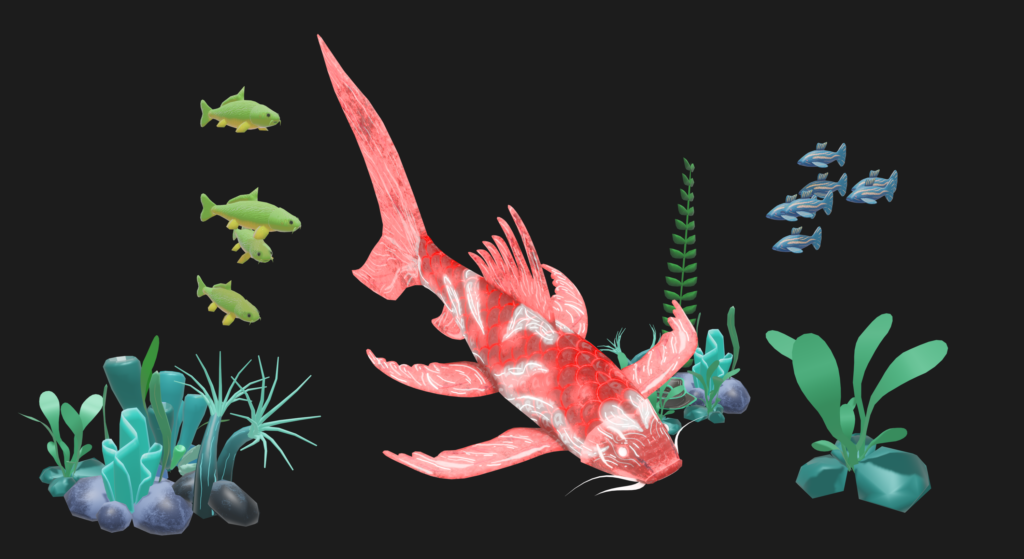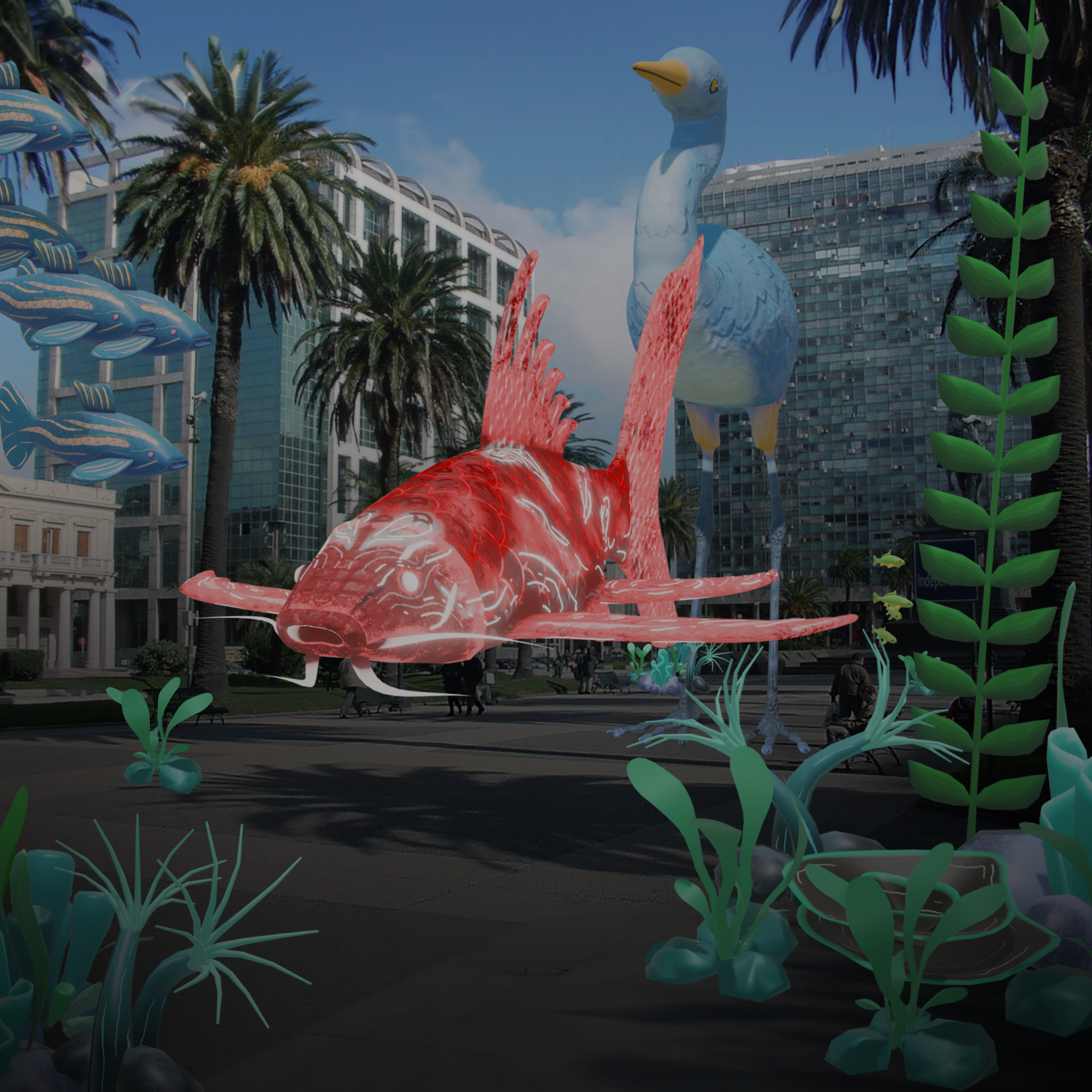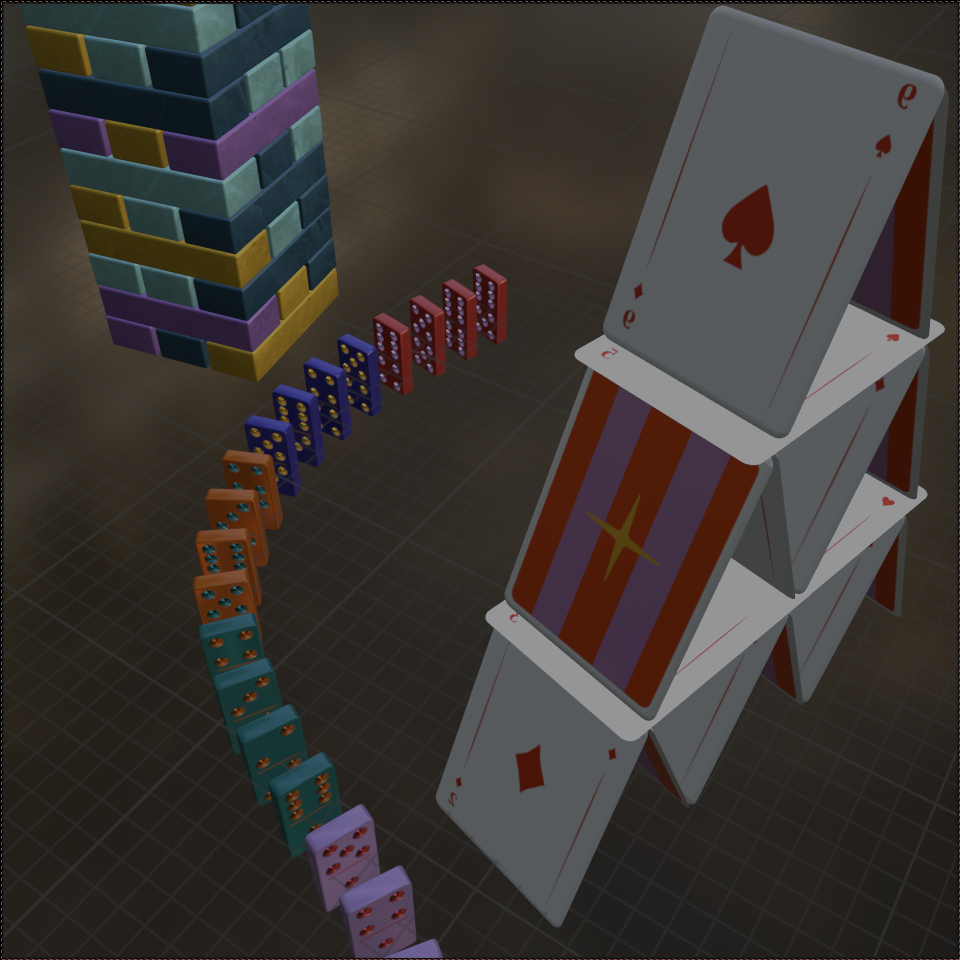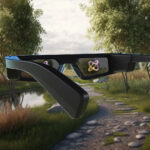We transformed a city center into an underwater video game using Google’s Geospatial Creator. Say hello…to Pac-Fish!
Google’s Geospatial Creator makes it easy to seamlessly seed 3D digital content into real world locations. So, rather than creating experiences which, however enjoyable, still feel separate from the user’s real life, we can start to layer them into real life itself.

Creating our Aquascape
To demonstrate how this works, we took an urban location and transformed the streets into a hidden aquatic paradise which mirrored the gameplay of the classic arcade game, Pac-Man. In our version, a Koi carp roamed around town trying to eat as many fish food pellets as possible whilst being pursued by a rather hungry Heron!

Our animations were developed using the Unity Engine and we were then able to anchor these within a real-life environment thanks to Geospatial’s Photorealistic 3D Tiles. For this example we chose downtown Montevideo, but we could have chosen almost any latitude and longitude covered by Google Street View.
And to give it that final flourish, realistic motion design allowed our Koi fish to glide naturally around the space whilst sea plants swayed with the gentle rhythm of the tide, giving our audience the true feeling of being submerged under water.

Accelerating Creativity
Using Geospatial Creator offers a number of advantages:
- Photorealistic 3D map tiles – allows the rapid creation of highly accurate environments
- Geospatial anchors – anchor content to within a meter accuracy using terrain or building geometry
- Preview in Unity Editor – visualize where content will be placed whilst you’re still building the experience.
The result is that we can prototype and iterate ideas faster, opening up greater possibilities for exploration and imagination.
What this means for brands
We’re living through an age where consumers, especially Gen Z, are consistently seeking out more authentic experiences. That’s why you’re starting to see lots of brands shoot their own content ‘down-the-lens,’ because people now associate that more direct-to-camera effect with the homemade, influencer style which feels less commercial. Well, guess what? The exact same thing is going to happen in AR.
People are increasingly going to want to engage with brands in an environment that feels real to them, which is why Geospatial is such a powerful tool.
- By blending the digital and the physical, we don’t have to interrupt a customer’s day in order to get their attention, we can simply become part of it.
- By having the flexibility to easily create experiences at almost any longitude or latitude, we can unlock a far higher degree of personalization at scale, so that one person’s experience of Coca-Cola in New York is totally different to another’s in Mumbai.
And in the future, that ability to talk to a million people individually, rather than collectively, is going to be an awesome step forward for our industry.






